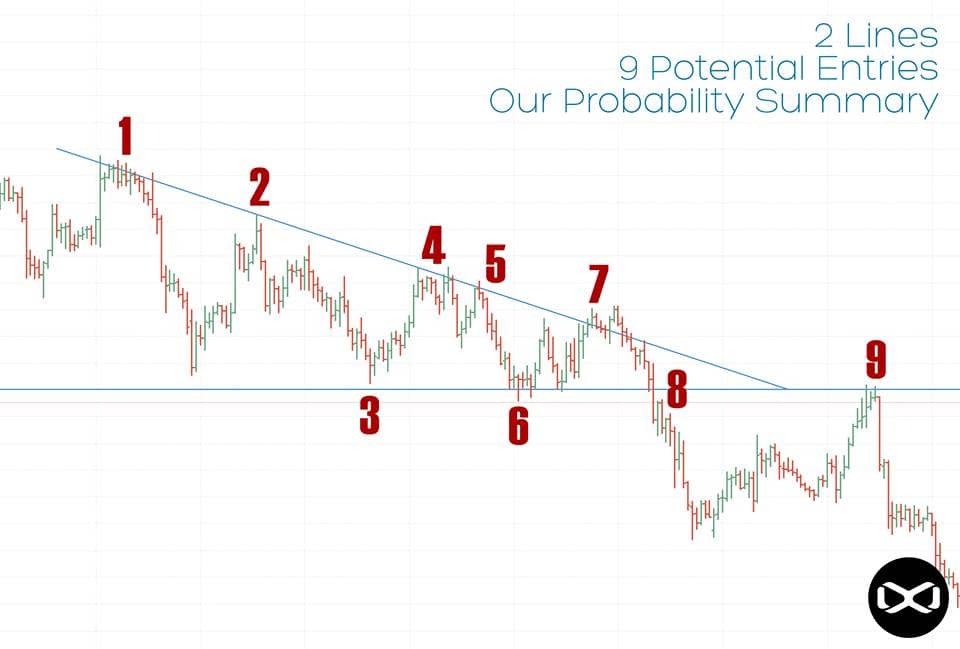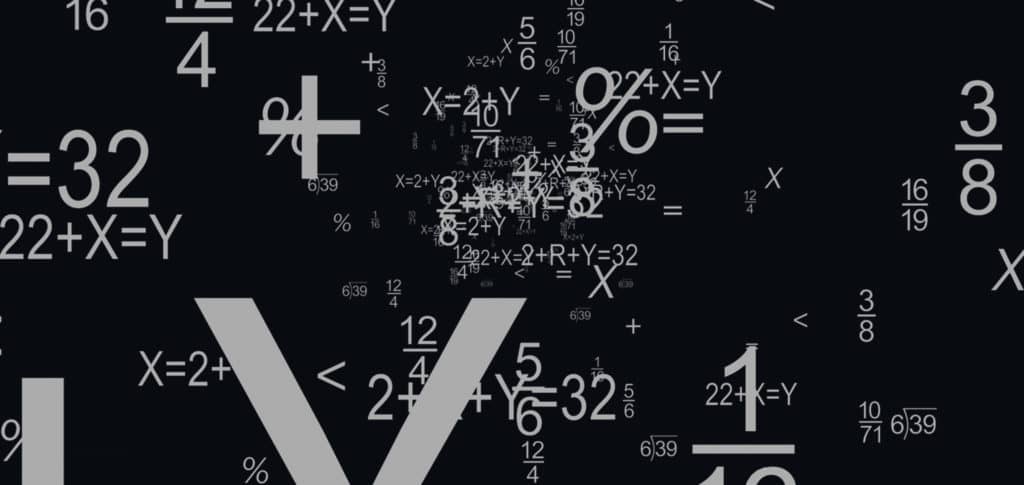Forex Chart Probability Summary
Let me show you how I look at a price chart from a technical analysis point of view.
By observing basic, vanilla price action and using just two support/resistance lines, I have made the following probability summaries on 9 key areas of the chart.
You can see here we have a descending triangle forming. The two most prominent key lines are therefore the horizontal base and the downwards sloping trend line that connects the lowering highs.

Just by drawing these lines in, and waiting for the market to play out, we can analyze the price action and take entries accordingly.
First and foremost, I would definitely not be taking all 9 of these entries. But some traders would, so I’m going to write a few words on each (potential) entry, and share my probability summary (based on a 1:1 reward risk with safe stop placement), and neglecting all other timeframes.
So that we’re on the same page:
- 0% = Bad trade, negative edge
- 50% = Neutral trade, no edge
- 100% = Perfect trade, definite edge
**Comments and probabilities are general indications designed for comparative analysis as an educational exercise, rather than concrete facts about these particular setups**
Trade #1 – Short – Trading with the trend, not a clean pull back to enter short. Technicals to the left of this screenshot indicate trend line + previous swing low resistance. Not a great entry point. 55%
Trade #2 – Short – Trading with the trend, decent pull back to enter short. Trend line resistance. 60%
Trade #3 – Long – Double bottom pattern for counter-trend entry with reversal candle + Bullish MACD. Must exit before sloping trend line resistance (at point 4). 65%
Trade #4 – Short – Deceleration at sloping trend line resistance + Reversal candle pattern. Must exit before previous double bottom level at point 3. Triangle squeezing together… the probability of success drops moving further into the apex. 60%
Trade #5 – Short – Deceleration at sloping trend line resistance + Reversal candle pattern. Must exit before previous double bottom level at point 3. This time, price has made a clearly visible higher low, indicating that the downtrend could be losing steam. 55% (I wouldn’t be trading this myself, but there is still a slightly short bias).
Trade #6 – Long – Support found just below the previous double bottom level at point 3. Low test. Must exit before sloping resistance, reward/risk is not favorable. Counter-trend move. 58%
Trade #7 – Short – Resistance on sloping line once again. This time there is hardly any room to move in the descending triangle. At this point, the market could explode either above or below, out of the triangle’s stranglehold. This is the time to exercise patience. 50%
Trade #8 – Short – Breakout trade. In FX, it’s best to wait for confirmation of the break by trading the retest. This allows you to get a much tighter pip risk and increase your reward/risk. Despite slight bearish bias, you’ll see a heap of false breaks in FX. Your best bet is to wait! 55%
Trade #9 – Short – Break and re-test of the key line. Deceleration with bearish reversal candle in the direction of the major trend. These are the kinds of entries to watch for! Super tight pip risk with safe stop placement available. Combined with medium-term trend momentum = big reward risk + high probability of success. 80%



Leave a Comment